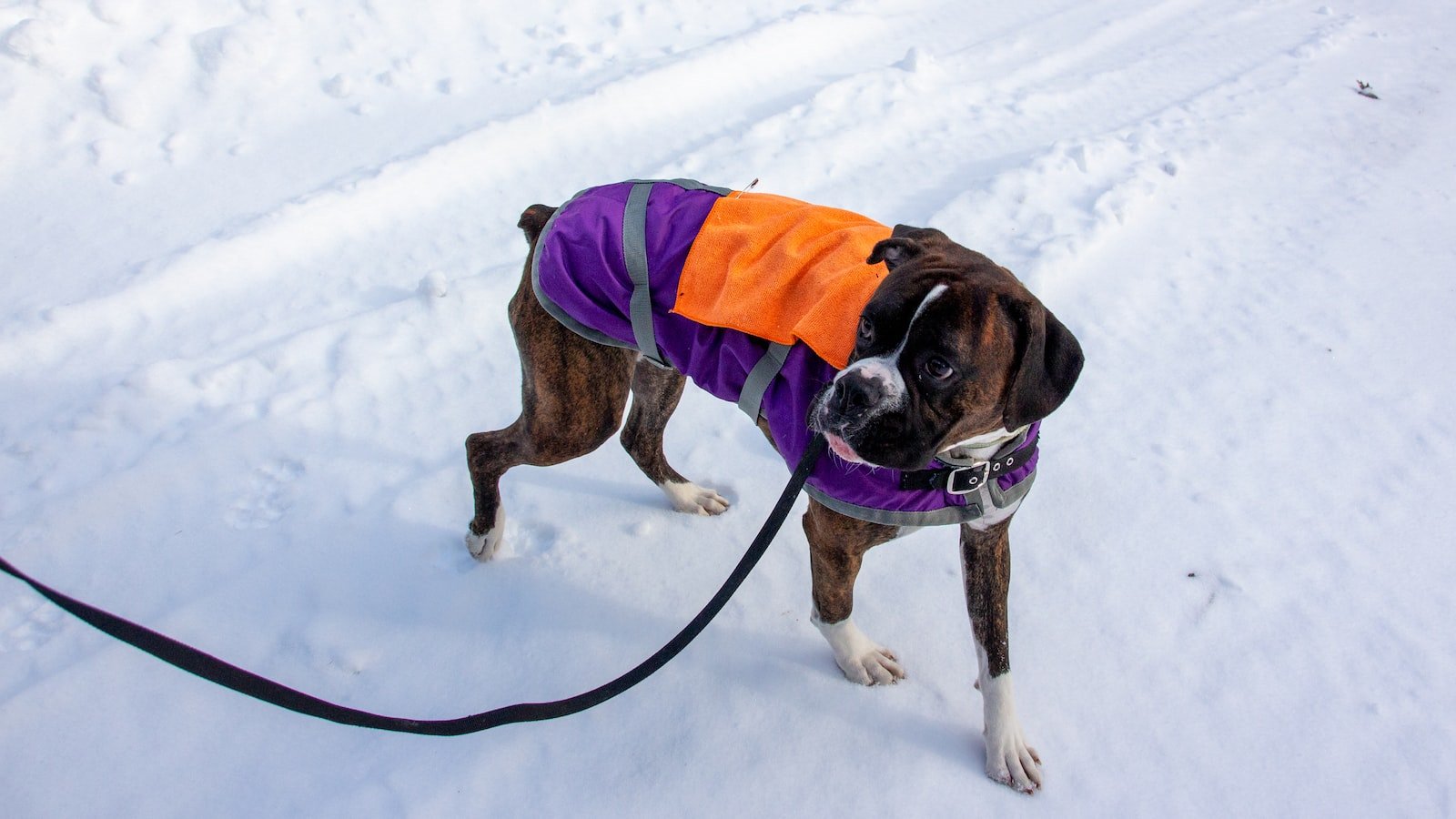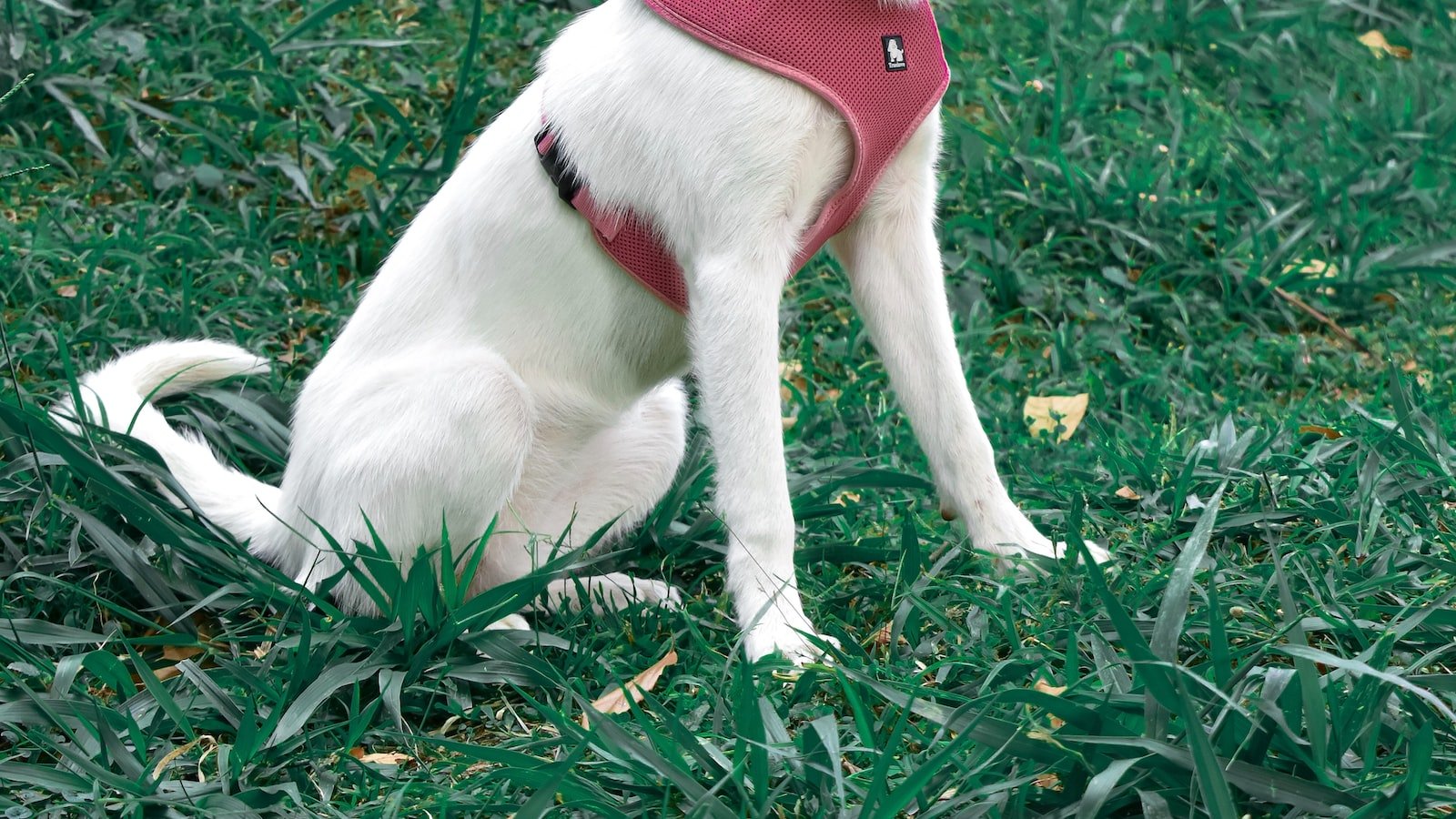As the soft morning light filters through the towering trees, a remarkable partnership comes to life among the chirping birds and rustling leaves. A service dog, impeccably trained and devoted to its handler, explores a vast expanse with grace and confidence, tail wagging in sync with their human companion’s contented smile. Off-leash freedom allows these extraordinary aides to perform their duties with unparalleled precision and independence. A bond founded on trust, nurtured through countless hours of laborious training, holds the key to their harmonious coexistence. In the realm of service dogs, understanding the significance of off-leash training is not just a luxury but an imperative that unlocks a world of possibilities for both human and canine.
Table of Contents
- – Understanding Off-Leash Training: A Key Component in Service Dog Training
- – Enhanced Safety and Control: Why Off-Leash Training is Crucial for Service Dogs
- – Benefits of Off-Leash Training: Empowering Service Dogs to Fulfill their Roles
- – Essential Techniques for Effective Off-Leash Training of Service Dogs
- - Nurturing the Bond: Strengthening the Relationship Through Off-Leash Training
- Q&A
- Insights and Conclusions

– Understanding Off-Leash Training: A Key Component in Service Dog Training
Understanding Off-Leash Training: A Key Component in Service Dog Training
When it comes to service dog training, one crucial aspect that cannot be overlooked is off-leash training. This specialized training ensures that service dogs can confidently navigate their surroundings without the need for a leash, giving them the freedom to assist their handlers effectively.
Off-leash training involves teaching service dogs to obey commands and exhibit appropriate behavior even when they are not physically restrained by a leash. This advanced level of training requires patience, consistency, and gradual progress to build trust between the dog and handler.
The benefits of off-leash training in service dog training are numerous:
- Improved Mobility: Off-leash training enables service dogs to accompany their handlers with ease, especially in crowded or tight spaces, where a leash can hinder their movement.
- Enhanced Focus: With off-leash training, service dogs learn to concentrate on their handler’s cues and commands, ultimately improving their focus on tasks and minimizing distractions.
- Emergency Response: Off-leash training prepares service dogs for emergency situations where their ability to respond quickly and effectively without a leash can be crucial.
Off-leash training requires dedicated training sessions, reinforcement of commands, and gradual exposure to different environments to ensure the safety and reliability of the service dog. It is a key component that empowers service dogs to fulfill their vital role in assisting individuals with disabilities.

- Enhanced Safety and Control: Why Off-Leash Training is Crucial for Service Dogs
Enhanced Safety and Control: Why Off-Leash Training is Crucial for Service Dogs
Off-leash training plays a crucial role in equipping service dogs with the necessary skills to ensure enhanced safety and control in their work. These highly trained animals provide invaluable assistance to individuals with disabilities, guiding them through their daily lives and performing essential tasks. By undergoing comprehensive off-leash training, service dogs develop a level of independence and confidence that allows them to function more efficiently.
The benefits of off-leash training for service dogs are numerous. Firstly, it enables these remarkable canines to have increased mobility, allowing them to navigate various environments more effectively. Whether it’s guiding a visually impaired person through a crowded street or providing support to someone with mobility impairments, off-leash training allows service dogs to move freely, ensuring they can fulfill their duties without unnecessary hindrance.
Moreover, off-leash training provides service dogs with a heightened sense of control, allowing them to respond quickly and appropriately in unpredictable situations. This training ensures that they remain focused on their handler, minimizing distractions and potential risks that could compromise their effectiveness. It also enhances their ability to assess and react to potential dangers, giving their handlers an added sense of security and peace of mind.
- Improved mobility and navigation in various environments.
- Enhanced response time and adaptability to unpredictable situations.
- Minimized distractions and potential risks.
- Heightened ability to assess and react to potential dangers in real-time.
Off-leash training is an essential component of preparing service dogs to excel in their roles. Through this training, they develop the skills and confidence necessary to navigate diverse environments, respond to emergencies, and provide life-changing support for individuals with disabilities. By granting service dogs the freedom and control they need, off-leash training ensures they can meet their obligations with utmost focus, efficiency, and safety.

– Benefits of Off-Leash Training: Empowering Service Dogs to Fulfill their Roles
Off-leash training plays a pivotal role in empowering service dogs to fulfill their roles effectively and efficiently. The benefits of this training approach are numerous and provide invaluable support to both service dogs and their handlers.
Dexterity and Mobility:
One of the remarkable benefits of off-leash training is the enhancement of a service dog’s dexterity and mobility. By allowing them to move freely and independently, service dogs can better navigate through tight spaces, crowded areas, and various unpredictable environments. Unencumbered by a leash, these dogs demonstrate an unparalleled ability to access hard-to-reach places, which is crucial for performing tasks such as retrieving medication, operating light switches, or opening doors.
Improved Communication:
Off-leash training also fosters improved communication between service dogs and their handlers. Without the physical constraint of a leash, dogs are better able to receive and interpret verbal and non-verbal commands. This heightened communication enables service dogs to understand their handler’s needs quickly, respond promptly, and carry out tasks more effectively. Furthermore, the trust and connection developed through off-leash training deepen the bond between the service dog and their handler, creating a harmonious and reliable partnership.
Increased Confidence:
Off-leash training significantly boosts the confidence of service dogs, enabling them to navigate challenging situations with ease. When given the freedom to explore and make decisions autonomously, service dogs become more self-assured in their abilities. This newfound confidence empowers them to handle stimuli such as loud noises, crowded spaces, and unfamiliar surroundings with composure and poise. With their enhanced confidence, service dogs can effectively fulfill their roles, supporting and assisting their handlers in even the most demanding situations.
– Essential Techniques for Effective Off-Leash Training of Service Dogs
Essential Techniques for Effective Off-Leash Training of Service Dogs
Build a Strong Foundation through Obedience Training:
Before embarking on off-leash training, it is essential to establish a solid obedience foundation with your service dog. Begin by teaching basic commands such as sit, stay, and come using positive reinforcement techniques. Consistency is key during this phase, ensuring your dog understands and responds reliably to each command.
Tips:
- Use high-value treats or rewards to motivate your dog during training sessions.
- Practice obedience exercises in various environments to improve your dog’s adaptability and focus.
- Gradually increase the duration and distance of commands to strengthen your dog’s obedience skills.
- Regularly reinforce obedience training throughout your dog’s life to maintain good behavior.
Transition to Off-Leash Training Methodically:
Once your service dog displays consistent obedience while on a leash, it’s time to introduce off-leash training gradually. Start in a secure, controlled environment and gradually decrease your reliance on the leash. Begin by using a long line or retractable leash to give your dog more freedom of movement while maintaining control. Slowly increase the distance between you and your dog, reinforcing obedience commands along the way. Remember to praise and reward your dog for compliance.
Tips:
- Monitor your dog’s response and progress closely, adjusting the training intensity based on their individual abilities.
- Practice recall activities to ensure your service dog can reliably return to you when off-leash.
- Expose your dog to controlled distractions, such as other dogs or environmental stimuli, to help them maintain focus and obedience in real-life situations.
Maintain Safety and Responsiveness:
Off-leash training comes with increased freedom but also demands heightened vigilance and responsibility. Your service dog should always wear identification tags and harness, signaling their role and contact information. Regularly assess your dog’s physical and mental well-being during training sessions, making note of any changes or limitations that may impact their off-leash readiness. Keep training sessions short and engaging, ensuring your dog remains responsive and eager to please.
Tips:
- Consider using a remote training collar or an auditory cue device to reinforce commands during off-leash activities.
- Create a consistent recall cue or hand signal that your service dog associates with returning to your side.
- Always prioritize your dog’s safety by evaluating potential risks in the training environment and avoiding potentially dangerous situations.
– Nurturing the Bond: Strengthening the Relationship Through Off-Leash Training
Nurturing the Bond: Strengthening the Relationship Through Off-Leash Training
Off-leash training is not only a valuable tool for teaching your furry friend obedience, but it also plays a crucial role in strengthening the bond between you and your pet. This training method allows for greater freedom and trust, enhancing your relationship with your canine companion on a whole new level.
Off-leash training provides numerous benefits for both you and your dog. When off-leash, your four-legged friend can explore their surroundings, engage in natural behaviors, and truly be themselves. This freedom fosters their confidence and independence, making them happier and more balanced individuals.
With off-leash training, you give your dog the opportunity to engage with you in a different way. Instead of relying solely on verbal and physical cues, you learn to communicate more subtly through body language, gestures, and eye contact. This deepens the bond between you, creating a stronger connection built on mutual understanding and trust. So, don’t hesitate to embark on this exciting journey of off-leash training and watch as your bond with your furry companion grows stronger with each step.
Q&A
Why is off-leash training important for service dogs?
Off-leash training is crucial for service dogs as it allows them to perform their duties effectively while giving handlers peace of mind. By being off-leash, these dogs can navigate obstacles, respond to commands swiftly, and have the freedom to carry out tasks efficiently.
What are the benefits of off-leash training for service dogs?
Off-leash training enhances a service dog’s independence, confidence, and reliability. It enables them to work more efficiently, respond to emergencies promptly, and adapt to various situations where being on a leash would hinder their ability to assist their handler.
Can off-leash training pose any risks to service dogs?
Off-leash training can potentially pose risks if not done correctly and gradually. It is crucial to ensure that the service dog has undergone thorough obedience training and can reliably respond to commands before attempting off-leash work. Additionally, practicing off-leash training in safe and controlled environments only is essential to minimize any potential dangers.
How does off-leash training improve the bond between service dogs and their handlers?
Off-leash training fosters a deeper bond between service dogs and handlers. It increases trust and communication between them, as handlers learn to rely on the dog’s abilities while the dog learns to understand and anticipate their handler’s needs. This collaboration creates a stronger and more effective team.
Are there specific tools or techniques used for off-leash training in service dogs?
Various tools and techniques can be employed for off-leash training in service dogs. Positive reinforcement, such as treats or verbal praise, is often used to reward desired behavior and reinforce obedience. Additional tools like long leads, clickers, or remote training collars may be utilized depending on the individual needs and preferences of the dog and handler.
Is off-leash training suitable for all types of service dogs?
Off-leash training may not be suitable for all types of service dogs, as the training requirements can vary based on the specific duties they perform. Dogs who require constant physical contact or those working in extremely crowded or urban environments may not benefit from off-leash training. Each dog’s capabilities and job requirements should be taken into account to determine the suitability of off-leash training.
Can off-leash training be applied to household pets as well?
While off-leash training initially focuses on service dogs, the principles and techniques can be applied to household pets as well. Off-leash training can be a valuable skill for any dog, promoting better obedience, recall, and general behavior both inside and outside the home. However, it is important to remember that not all dogs may be suited for off-leash training, and individual temperament and behavior should always be considered.
Insights and Conclusions
As we bid adieu to this exploration of the remarkable connection between service dogs and off-leash training, one cannot help but marvel at the immense importance this skill holds for these extraordinary canines. Through captivating anecdotes and insightful revelations, we have witnessed firsthand the transformative power of allowing service dogs to roam freely, unencumbered by the confinement of a leash.
With each pawstep taken in their unraveled splendor, these well-trained companions manifest their unwavering dedication to those in need. They have proven, time and time again, that their ability to navigate the world without restraint is a beacon of hope for countless individuals who rely on their unwavering support.
Through disciplined practice and unwavering commitment, these remarkable creatures have paved the way for a new understanding of the immense value inherent in off-leash training. They brave bustling streets, crowded venues, and daunting obstacles with grace and poise, proving that their untethered abilities optimize their potential to excel in their life-saving roles.
Beyond the physiological benefits, their off-leash mastery serves as a symbol of trust, an unspoken agreement between human and canine, where a bond of partnership is forged. As these loyal companions weave through the labyrinth of everyday challenges, their unspoken language with their handlers holds fast, cementing a remarkable foundation of companionship and understanding.
But perhaps the most profound impact of off-leash training lies in its ability to restore autonomy to the individuals they serve. With each exhilarating unleashed sprint and each confidently executed command, service dogs grant independence and a renewed sense of self to their human counterparts. They become not just a physical aid, but an unwavering source of encouragement, a beacon of freedom amidst adversity.
As we bid farewell to this expedition into the world of off-leash training in service dogs, let us pause for a moment to reflect: their unyielding dedication, their unwavering loyalty, and their tireless work deserve our utmost admiration. May we continue to support these four-legged heroes and celebrate the immeasurable impact they have on our world.
In this final chapter, the echoes of their triumphant strides linger in our hearts, as we stand in awe of their remarkable abilities and cherish the transformative power of off-leash training.
As an affiliate, my content may feature links to products I personally use and recommend. By taking action, like subscribing or making a purchase, you’ll be supporting my work and fueling my taco cravings at the same time. Win-win, right?
Want to read more? Check out our Affiliate Disclosure page.